316 STAINLESS STEEL MESH
1. 316L stainless steel mesh
Stainless steel mesh, also known as stainless steel mesh, is denoted SUS. This is a mesh that is knitted or welded from stainless steel wires to form different large and small mesh cells or from perforated flat stainless steel sheets to form a mesh also called stainless steel mesh.
There are many different types of stainless steel mesh, but the 3 most commonly used mesh types on the market today are stainless steel 201, 304 and 316.
By type, there are stainless steel mesh knitting corrugated squares, woven ribbed waves, high temperature welding, round or square hole punching...
Currently, Quang Minh is using 316L stainless steel mesh (of Austenitic classification) which is the most common types of stainless steel imported from large-scale Chinese factories to ensure quality, full certificate of import and origin of goods (see details)
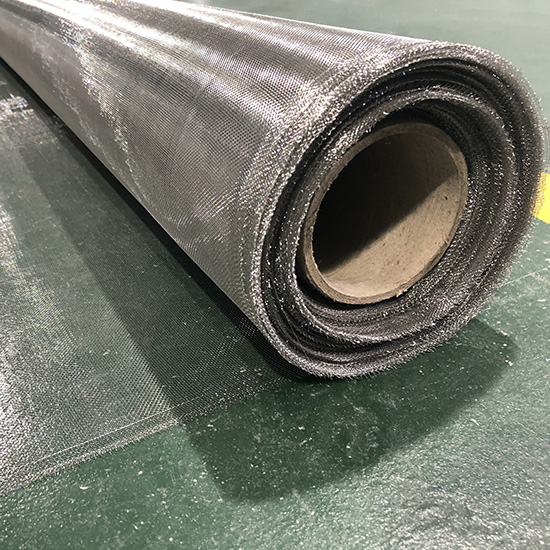 | 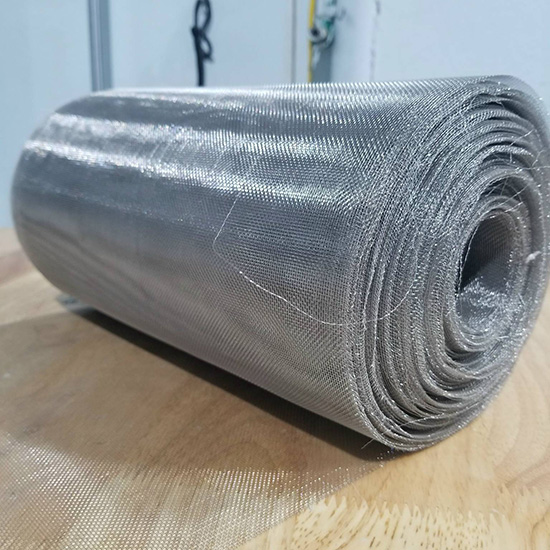 |
316L stainless steel mesh roll | |
We would like to quote a specific article about 316L stainless steel material to help customers understand more.
2. What is 316 stainless steel mesh?
In the metallurgical field, stainless steel also known as stainless steel or stainless steel derived from the French word inoxydable (inoxidable) is a steel alloy, with a minimum chromium content of 10.5% by mass and a maximum of 1.2. % carbon by mass. Stainless steel is most prominent in its resistance to corrosion, which increases with increasing chromium content. The addition of molybdenum increases corrosion resistance in reducing acids and resists pitting attack in chloride solutions. Therefore, there is a wide range of stainless steels with different chromium and molybdenum contents to suit the environment the alloy is subjected to. Stainless steel's resistance to corrosion and staining, low maintenance and familiar luster make it the ideal material for many applications that require both steel strength and corrosion resistance.
Stainless steel coiled into sheets, plates, rods, wires and tubes used in: cooking utensils, cutlery, surgical instruments, primary instruments; construction materials in large buildings, such as the Chrysler Building; industrial equipment (for example, in paper mills, chemical plants, water treatment); and storage tanks and tankers for chemicals and foodstuffs (for example, chemical and oil tankers). Stainless steel's corrosion resistance, ease of cleaning and steam sterilization, and no need for surface coatings also influence its popularity in commercial kitchens and processing plants. food.
3. History
Stainless steel is associated with the name of a British steel industry expert, Mr. Harry Brearley. When in 1913 he invented a special steel with high wear resistance, by reducing the carbon content and adding chromium to the steel composition (0.24% C and 12.8% Cr).
The German steel company Krupp then further improved this steel by adding the element nickel to the steel to increase its resistance to acid corrosion and soften it for ease of work. On the basis of these two inventions, two grades of steel 400 and 300 were born just before the First World War. After the war, in the 20s of the 20th century, a British steel industry expert Mr. W. H Hatfield continued to research and develop ideas about stainless steel. By combining different proportions of nickel and chromium in the steel composition, he created a new type of stainless steel 18/8 with a ratio of 8% Ni and 18% Cr, which is the familiar 304 grade belong today. He is also the inventor of 321 steel by adding titanium to the steel with the above 18/8 ratio.
Over nearly a century of birth and development, today stainless steel has been widely used in all civil and industrial fields with more than 100 different grades of steel.
In metallurgy, the term stainless steel is used to refer to a form of iron alloy containing at least 10.5% chromium. The name is "stainless steel" but it is actually an alloy of iron that does not discolor or corrode as easily as other common steels. This material can also be called corrosion resistant steel. Usually, there are different ways to apply stainless steel to different surfaces to increase the life of the item. In life, they appear everywhere as cutting blades or watch straps...
Stainless steels are very resistant to oxidation and corrosion, however choosing the right grades and their specifications to suit each particular case is very important.
The resistance to oxidation from ambient air at normal temperatures of stainless steel is due to the percentage of chromium present in the alloy (minimum 13% and can be up to 26% in the case of working conditions in harsh working environments). The oxidized state of chromium is usually chromium(III) oxide. When chromium in steel alloys is exposed to air, a very thin layer of chromium III oxide appears on the surface of the material; This layer is so thin that it cannot be seen with the naked eye, which means that the metal surface is still shiny. However, they are completely inactive with water and air, so they protect the steel layer underneath. This phenomenon is called anti-rust oxidation by materials engineering. This phenomenon can be seen in some other metals such as aluminum and zinc
When stainless steel objects are linked together with forces such as bolts and rivets, their oxide layer can be removed at the places where they are linked. When disassembling them, it can be seen that the locations are corroded.
Nickel as well as molybdenum and vanadium have similar anti-rust properties but are not widely used.
Besides chromium, nickel as well as molybdenum and nitrogen have similar anti-rust properties.
Nickel (Ni) is a common ingredient to enhance the ductility, ductility and form ability of stainless steel. Mole-black (Mo) makes stainless steel highly resistant to corrosion in acidic environments. Nitrogen (N) gives stainless steel stability at negative (cold) temperatures.
The different participation of chromium, nickel, molybdenum, and nitrogen components lead to different crystal structures that give different mechanical and mechanical properties of stainless steel.
4. Classify
There are four main types of stainless steel: Austenitic, Ferritic, Austenitic-Ferritic (Duplex) and Martensitic.
• Austenitic is the most commonly used stainless steel. Belonging to this line can include steel grades SUS 301, 304, 304L, 316, 316L, 321, 310s... This type contains at least 7% Nickel, 16% chromium, carbon (C) 0.08% max. Such a composition gives this steel a high corrosion resistance over a fairly wide temperature range, is non-magnetic, flexible, malleable, and easy to weld. This type of steel is widely used to make household appliances, containers, industrial pipes, industrial ships, architectural outer shells, other construction works...
• Ferritic is a stainless steel with mechanical properties similar to mild steel, but has a higher corrosion resistance than mild steel (low carbon steel). Belonging to this line can include steel grades SUS 430, 410, 409... This type contains about 12% - 17% chromium. This type, with 12%Cr is often used in architecture. The type containing about 17%Cr is used to make household appliances, boilers, washing machines, indoor structures...
• Austenitic-Ferritic (Duplex) This is a "between" Ferritic and Austenitic steel with the common name DUPLEX. Belonging to this line can include LDX 2101, SAF 2304, 2205, 253MA. Duplex steels contain much less Ni content than Austenitic grades. DUPLEX has typical characteristics of high strength and flexibility, widely used in petrochemical industry, paper and pulp production, shipbuilding... In the situation of escalating stainless steel prices Due to the scarcity of nickel, the DUPLEX series is increasingly being used to replace some austenitic steel grades such as SUS 304, 304L, 316, 316L, 310s...
• Martensitic: This type contains about 11% to 13% Cr, has good strength and hardness, and is relatively resistant to corrosion. Widely used to make turbine blades, blades...
5. Characteristics of stainless steel
The properties of the stainless steel group can be viewed from a comparative perspective with the low carbon steel family. In the most general terms, stainless steel has:
• High forging stability rate
• Higher ductility
• Higher hardness and durability
• Higher heat resistance
• Higher corrosion resistance
• Better low temperature toughness
• Poorer magnetic response (austenitic steel only)
Those mechanical properties are actually true for the austenitic steel family and can vary quite a bit for other grades and steel families.
These mechanical properties relate to the areas of application of stainless steel, but are also influenced by equipment and manufacturing methods
Table 1 (Part A). Comparative properties of stainless steel
| Alloy group | Magnetism | Forging Stabilization Rate | Corrosion resistant | The ability to stabilize |
| Austenit | - - | Very high | High | Cold forging |
| Duplex | √ | Moderate | Very high | - - |
| Ferrit | √ | Moderate | Moderate | - - |
| Martensit | √ | Moderate | Moderate | Me and Ram |
| Hoá bền tiết pha | √ | Moderate | Moderate | Senescent |
(1)- The attraction of the magnet to the steel. Note, some steel grades are attracted to magnets when cold forging.
(2)- Significant variation among steel grades in each group, for example, unscrambled grades have lower corrosion resistance, and with higher Mo have higher resistance.
Table 2 (Part B): Comparative mechanical properties of stainless steel grades
| Nhóm hợp kim | Plasticity | Working at high temperature | Working at low temperature | Weldability |
| Austenit | Very high | Very high | Very good | Very high |
| Duplex | Moderate | Low | Moderate | High |
| Ferrit | Moderate | High | Low | Low |
| Martensit | Low | Low | Low | Low |
| Stable chemistry | Moderate | Low | Low | High |
(3)- Measured by toughness or ductility near 0°C. Austenitic stainless steels retain ductility at low temperatures.
6. Classification according to standards
There are many variations on stainless steel, and the American Iron and Steel Institute (AISI) formerly specified several grades according to component standards, and continues to be widely used today. Today, SAE and ASTM are based on AISI standards to specify their steel grades, with the UNS index of 1 character + 5 digits for new steel grades. The most complete indexing range of stainless steel families used in the Iron and Steel Association (ISS), and the SEA/ASTM handbook on the unified index system. Certain other steel grades do not have a standard index, but are in use in other countries or international regulations, or regulations for specialized production such as welding wire standards.
7. 316L stainless steel mesh production process
Basically, the production process of 316L stainless steel mesh includes the following stages:
Step 1: Put the ingredients into the electric oven and melt for about 8-12 hours. The part of the crystalline steel is called the billet.
Step 2: The hot rolling process will take place to shape the billet.
Step 3: The next stage is annealing including heating and cooling.
Step 4: Wait for the steel to cool and proceed to cut to the desired size.
8. Application of 316L stainless steel mesh
With many outstanding properties such as heat resistance, bearing capacity, toughness, malleability, the product has diverse applications. Currently, 316 stainless steel mesh is considered an effective assistant for everyone in the following areas:
8.1. 316 stainless steel mesh used in construction
• Filter out dirt and impurities inside the mineral source used for construction.
• Transform into a stone leak and many interior decorations to bring a luxurious and unique space to your home.
• Anti-bird, anti-mouse shield design
• Products are made into anti-mosquito doors or walls to prevent insects from entering the building
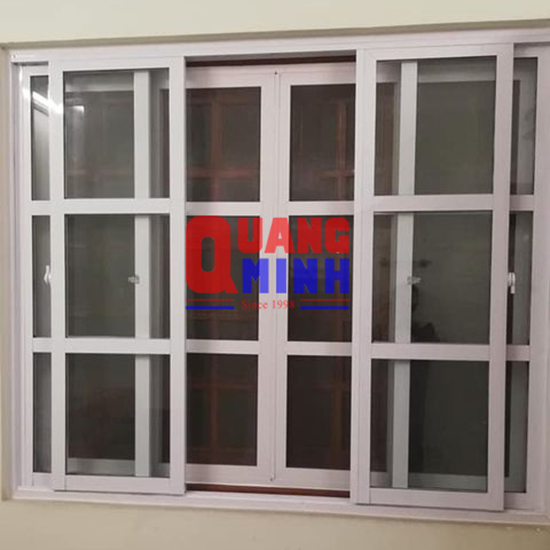
Quang Minh stainless steel mesh door uses 316L stainless steel mesh
8.2. 316 stainless steel wire mesh used in the food industry
• The product is applied in the process of filtering milk and fish sauce.
• Remove the pulp from the juice.
•Used as a stop table to filter domestic water residue, filter excess waste inside cooking oil and beverage.
• Cheap 316 stainless steel wire mesh is also used to filter beer, coffee grounds or honey.
8.3. 316 stainless steel wire mesh used in industry
• 316 stainless steel wire mesh used in industry
• The product is commonly used in electronic circuit technology systems to filter electronic powder crumbs.
• Cheap 316L stainless steel mesh is popularly used in car surface processing technology. Give your car a shiny and eye-catching beauty.
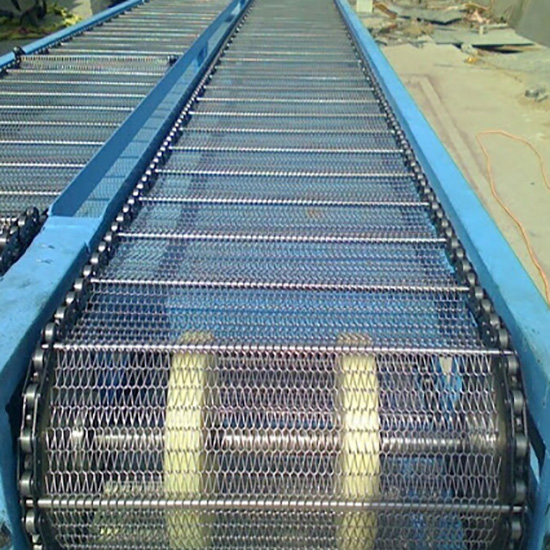
Stainless steel mesh for industrial use
8.4. 316 stainless steel wire mesh used in agriculture
• The layer placed inside the aquaculture pond to filter out impurities, garbage and livestock waste.
• Filter clean water to feed live shrimp or other picky aquatic species.
• 316 stainless steel mesh is widely used in the filtration of lake, lake, river and sea water to provide cleaner water than humans.
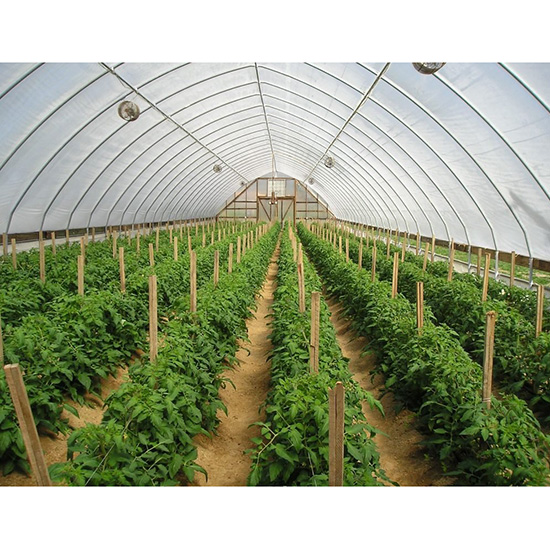
Stainless steel mesh used in agriculture
8.5. 316 stainless steel wire mesh used in the pharmaceutical industry
• Filtration of drug powder in pharmaceutical drug production line
• Filter residues in medicinal juices made from pureed raw materials
• 316 stainless steel wire mesh used in drug transport conveyor belt




